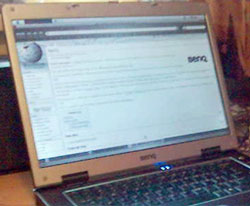Trending
Elections 2024
Jobs
- Communications Manager George
- Coordinator - Marketing and Communications Johannesburg
- Printing Business Manager Polokwane
- Copywriter Johannesburg
- Copywriter Cape Town
- Account Manager, Producer and Field Producer Parkhurst
- Production Manager Johannesburg
It's time PR agencies, marketers to think smarter

Webfluential launched more than a month ago and the platform has recorded some interesting figures.
I shared some thoughts on the new platform that aims to connect influencers, marketers, brands and PR companies in the article "Take a step down the social media influencer route."
Three weeks since the launch, 300 active South African influencers have had their various profiles analysed. The platform now brags:
• Analytics for 50 South African Blogs read by 950,000 monthly uniques
• 2.1 million analysed tweets from 130 influencer accounts linked to twitter profiles that engage with 850,000 followers.
• 100 South African Instagram accounts are being tracked by Webfluential which engage with 560,000 people
• 25 active YouTube Accounts have been analysed. These accounts engage with 45,000 subscribers with a video view of 8 million
Interesting stats - but maybe not as large as would be expected? It would seem many key South African "influencers" (for want of a better term) have not signed up to the platform. I think this speaks more for the current state of digital marketing in South Africa than the platform itself.
All too often PR companies will send review products to bloggers that have little or no interest in them (young girl's clothing to a mommy blogger with two young boys, for example).
Alternatively there is a set list of "bloggers" who are invited to the same events, whether the brand fits into their field or not.
Lazy PR?
While it is well and good to present a client with coverage, many a time the coverage isn't reaching the intended market. PR agencies don't need a tool like Webfluential to identify blogs and individuals who can influence the required target market. To be completely honest, a bit of time trawling Twitter or Google would likely garner successful results.
However, the "influencers" are also not free of blame. For far too long it has been relatively easy to inflate blog analytics or gyppo stats. Facebook likes and Twitter followers can be easily bought (as we saw with the Twitter gate scandal that irrupted awhile back - a digital agency and two "influencers" were purchasing followers for brands and themselves - looks impressive on month end reports!). Where PR agencies and marketers could benefit from a tool like Webfluential is that these tools have specific algorithms and are able, to a degree, to identify the "frauds".
It might also be time to stop analysing the numbers so much and focus less on reach and more on relevance.
Where to?
Social media has given us a host of new platforms to promote brands. It provides unlimited tools and "influencers" at the disposal of smart marketers. But it is time we start thinking out the box. The number of friends on Facebook, likes on a Facebook page or followers on Twitter doesn't translate into people going out to buy a product. "Influencers" need to influence (obviously). If they're telling their peers about a product ultimately brands should want those peers to go out and buy said product. Those peers should tell their peers and the ripple should steadily grow.
South Africa is behind the curve in this regard. I recently got chatting to a friend who works at a UK PR firm. Her title is "head of blogger engagement" and her job is to find new blogs to promote brands. This agency's focus is to promote constantly on different blogs with different "influencers" to reach new markets rather than relying on a trusty few over and over again.
They've grasped the idea that sometimes people will get frustrated hearing the same brand push from the same influencer over and over again, so they work at finding different mouthpieces that provide a different view (though still speak to the target market of the brand). In my experience, here at home we tend to use the same platforms, the same blogs, and the same "influencers".
I believe tools like Webfluential are going to change the game with regards to utilising "influencers" for brand promotion but maybe it is time PR agencies and marketers also start thinking smarter.
Social media and the platforms that come with it create unlimited opportunities for brands but giving someone a freebie in the hope that they mention it on Twitter and their large following takes notice is no longer enough. There are South Africans bragging followings of 90,000-plus on Instagram and creating YouTube channels that clock up views in record time. It's time to start getting creative and utilising these "influencers" with clever campaigns targeted at those platforms. The opportunities are endless.











